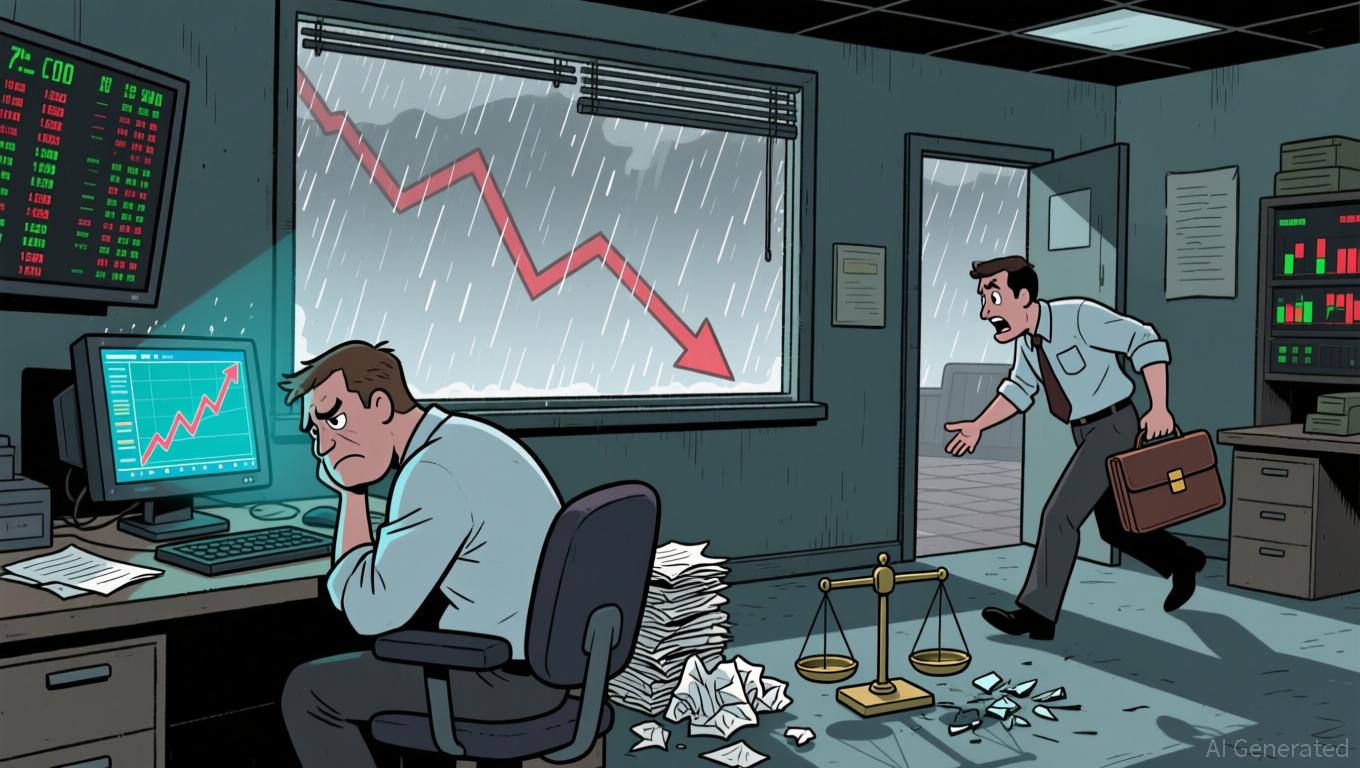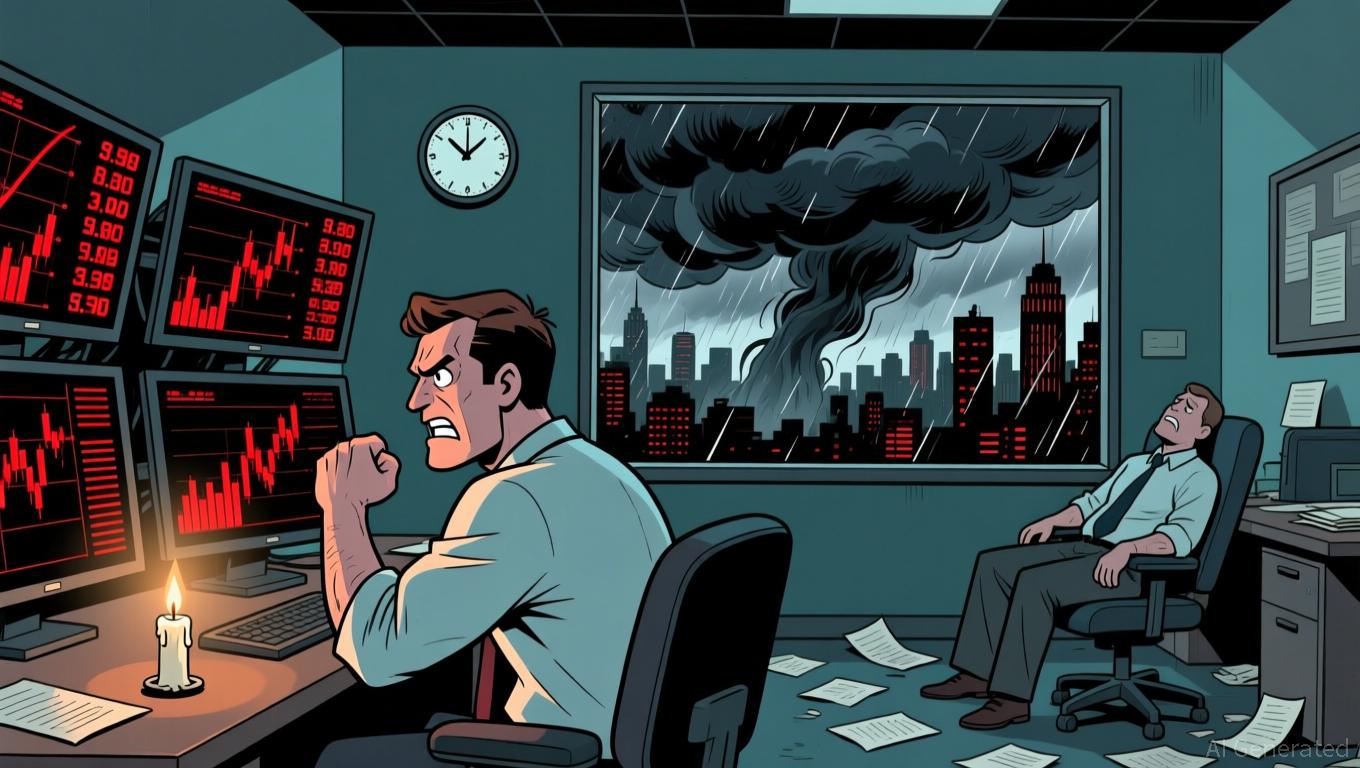Bitcoin Updates Today: The Future of Bitcoin in 2026 Hinges on Federal Reserve's Actions on Inflation
- Bitcoin's 2026 recovery depends on Fed inflation policy linked to CPI, PPI, and PCE metrics. - Persistent CPI/PCE inflation above 2% delays rate cuts, increasing Bitcoin's opportunity cost as non-yielding asset. - PPI input cost trends influence manufacturing pricing, prolonging inflation risks for Bitcoin's bearish environment. - PCE's alignment with consumer behavior shifts could accelerate Fed rate cuts, boosting Bitcoin's appeal as monetary easing hedge. - Housing/energy inflation volatility and Fed
Bitcoin's recent price volatility has led to a pressing question: Is a recovery on the horizon for the cryptocurrency? More analysts and investors are now relying on established economic signals—especially inflation measures like the Consumer Price Index (CPI), Producer Price Index (PPI), and Personal Consumption Expenditures (PCE) price index—to
The CPI, the most commonly cited inflation gauge, tracks shifts in the average prices paid by households for goods and services
The PPI, which measures price changes at the production stage, provides additional perspective

Looking beyond headline numbers, inflation trends in specific sectors are also important. For example, housing and energy prices—which together account for 55.4% of the CPI—remain persistently high
Investors should also pay attention to how inflation interacts with broader economic sentiment. While the Fed’s 2% inflation target remains out of reach, the journey toward that goal will shape the landscape for Bitcoin. If both PCE and CPI approach 2% by mid-2026 and PPI signals stable production costs, the Fed may shift toward lowering rates, which could benefit riskier assets. However, if inflation control falters—such as a renewed rise in service sector prices—relief could be delayed, keeping Bitcoin under pressure.
In summary, Bitcoin’s chances for recovery depend on three main elements: how quickly CPI and PCE inflation slow, the direction of PPI costs, and the Federal Reserve’s reaction to these trends. As the central bank works to balance price stability with employment goals, Bitcoin’s prospects will remain closely linked to the broader economic picture. Investors should keep a close watch on these indicators, as they are likely to shape the next phase of Bitcoin’s unpredictable journey.
Disclaimer: The content of this article solely reflects the author's opinion and does not represent the platform in any capacity. This article is not intended to serve as a reference for making investment decisions.
You may also like
XRP News Today: XRP Faces Uncertainty: Bearish Trends Clash with Optimism from ETF Prospects
- XRP faces critical juncture at $1.96 as bearish technical patterns clash with institutional optimism from new ETFs. - Descending triangle breakdown and RSI divergence signal potential 25% drop to $1.55, contradicting ChartNerd's reversal prediction. - Bitwise XRP ETF's $25.7M debut volume injects liquidity but risks accelerating forced selling from 41.5% of supply at a loss. - Analysts debate ETF-driven bullish potential vs. structural risks, with $2.20 support zone and $1.25 price floor as key battlegro

CFTC's Efforts in Crypto Encounter Staffing Shortages and Political Challenges as Selig Approaches Confirmation
- Trump's nominee Michael Selig advanced to Senate confirmation after a 12-11 party-line vote to lead the CFTC amid crypto regulatory debates. - Selig, an SEC crypto expert, emphasized balancing innovation with investor protection and aligning with Trump's pro-crypto agenda during his hearing. - The CFTC faces staffing gaps (543 vs. SEC's 4,200) and political pressure to maintain bipartisan balance while navigating crypto rule harmonization. - Selig deferred resource needs to post-confirmation assessment a

Bitcoin News Update: Cryptocurrency Company Seeks $100 Million Sale Following Founder’s Indictment for Money Laundering
- Crypto Dispensers, a Chicago-based Bitcoin ATM firm, faces a $100M sale amid a federal indictment accusing founder Firas Isa of laundering $10M through its network. - The DOJ alleges Isa converted illicit funds from fraud and drug trafficking into crypto via weak AML controls, despite claims of robust compliance since 2020. - Regulatory scrutiny intensifies as UK/SFO and Europol crack down on crypto fraud, signaling reduced anonymity for criminal transactions in digital assets. - Market uncertainty grows

Ethereum News Update: Ethereum at a Turning Point: Downward Trends Meet Institutional Advancements
- Ethereum faces bearish signals as RSI nears oversold levels and MACD remains below its signal line, risking a break below $3,000 support. - Treasury firms like FG Nexus are selling ETH to fund buybacks, exacerbating downward momentum amid broader market pressures. - BlackRock registers a staked ETH ETF to boost returns via staking yields, attracting $13.1B in inflows since its July 2024 launch. - Fidelity highlights the Fusaka upgrade to enhance scalability and redirect economic activity to layer-1, pote
